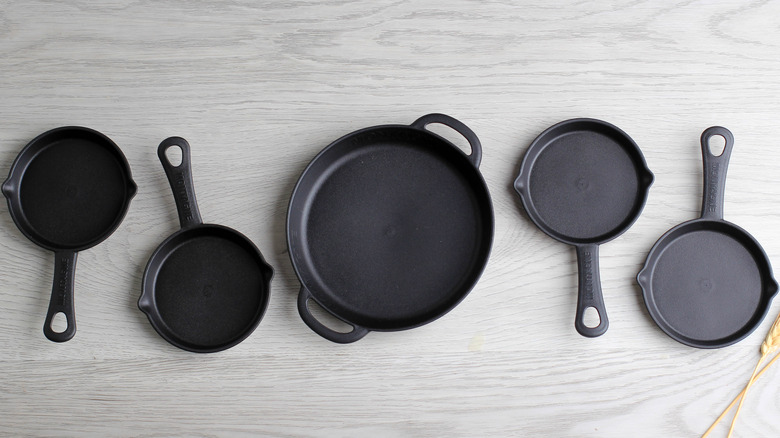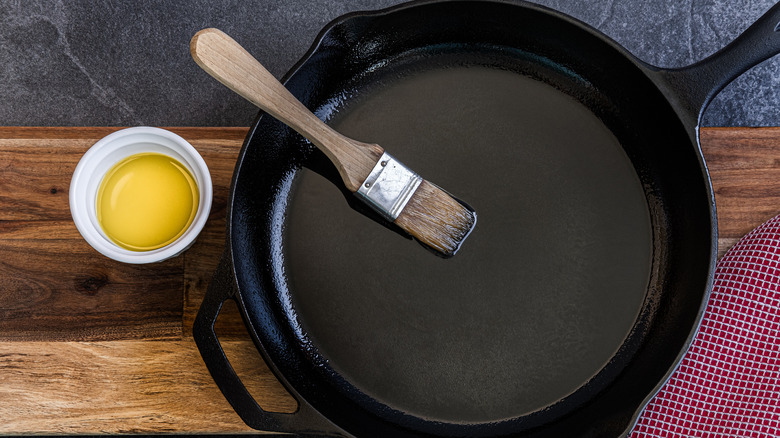The Step You're Forgetting When Seasoning Your Cast Iron
When the culinary gods decided humans could use a palate upgrade, they whispered the secret of cast iron cookware into our dreams. This version of the origin story may or may not be true, and while we don't really know who invented it, cast iron has been around for centuries, dating back to China's Han Dynasty (206 B.C.-220 A.D.). Cast iron's enduring popularity doesn't come as a surprise — it's built to last and can be used on any surface. Much like us, cast iron cookware ages well with proper care and becomes more seasoned with time and use. Our seasoning might not give us extra years, but it's the secret to making cast iron last for a long time.
Seasoning cast iron cookware isn't about sprinkling it with spices — it's the process of building a natural, non-stick surface by repeatedly oiling and heating it, which triggers a chemical reaction called polymerization. Seasoning cast iron cookware is important, but even the most devoted users sometimes miss a crucial step: seasoning the outside as well.
Unlike non-stick cookware, cast iron's textured surface allows oils to stick and form a smooth, non-stick surface that acts as a shield against rust and makes cookware more resilient to wear and tear. This is why it's important to season cast iron thoroughly. Not seasoning the outside of cast iron cookware is like forgetting to slather sunscreen on your back at the beach — it might not seem important until you end up with a sunburn, or in this case, rust.
Seasoning and caring for cast iron
Cast iron skillets may not be as indestructible as you think, but they will serve you for a lifetime. Knowing the right seasoning techniques will help you keep your cookware in mint condition. The first step is to clean it. One of many common myths about cast iron cookware is that you shouldn't use soap on it, but using a mild variety is okay. Use a gentle sponge or a brush to hand-wash it to preserve the surface. Thoroughly dry it with a soft towel or paper towel after cleaning, and apply a thin layer of food-grade oil like canola, both inside and out. Flaxseed oil is often touted as the best option due to its high ALA content, which helps polymerize the oil more effectively onto the cast iron surface. Lastly, preheat the oven to 450-500 degrees Fahrenheit, place the cast iron upside down on the rack, and bake for an hour. Once done, let it cool and store it in a moisture-free area.
You don't have to season your cast iron cookware often. Only a few times a year will do. Seasoning will mostly take care of the rust, but take extra measures to keep your cast iron happy and rust-free by not soaking it in water for long, skipping the dishwasher to clean it, and using soft utensils like wooden spatulas when cooking. Acidic foods like tomatoes can damage the seasoning, so make sure to keep your cooking time under 30 minutes.

